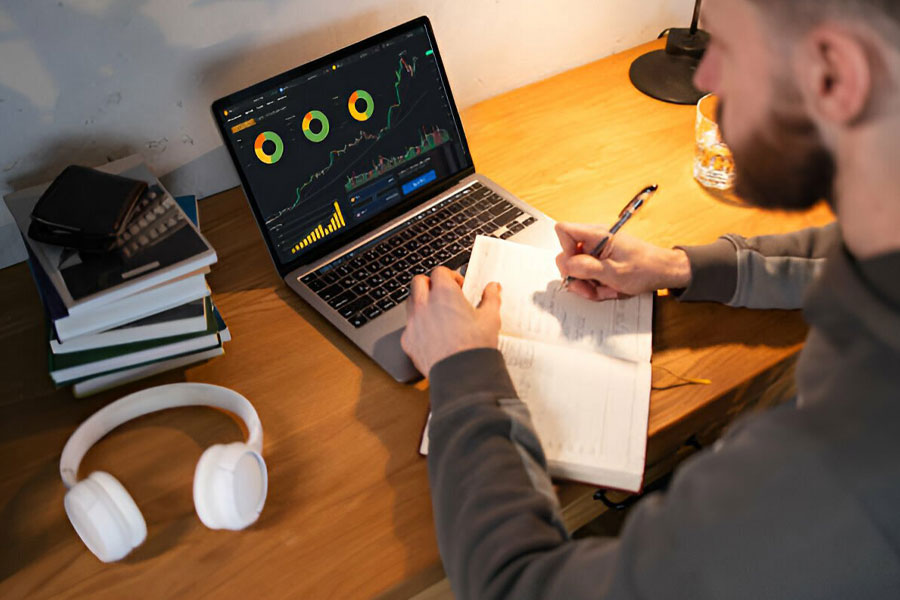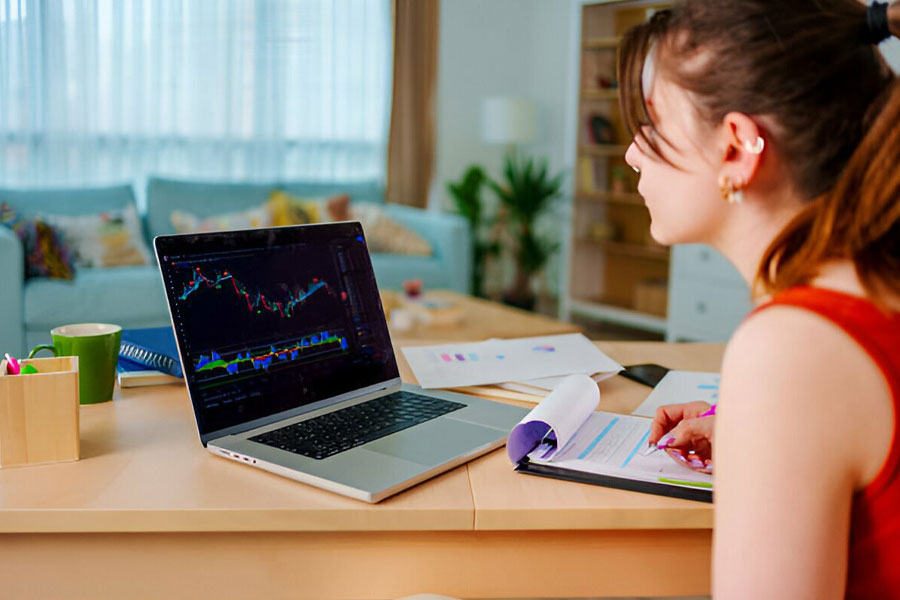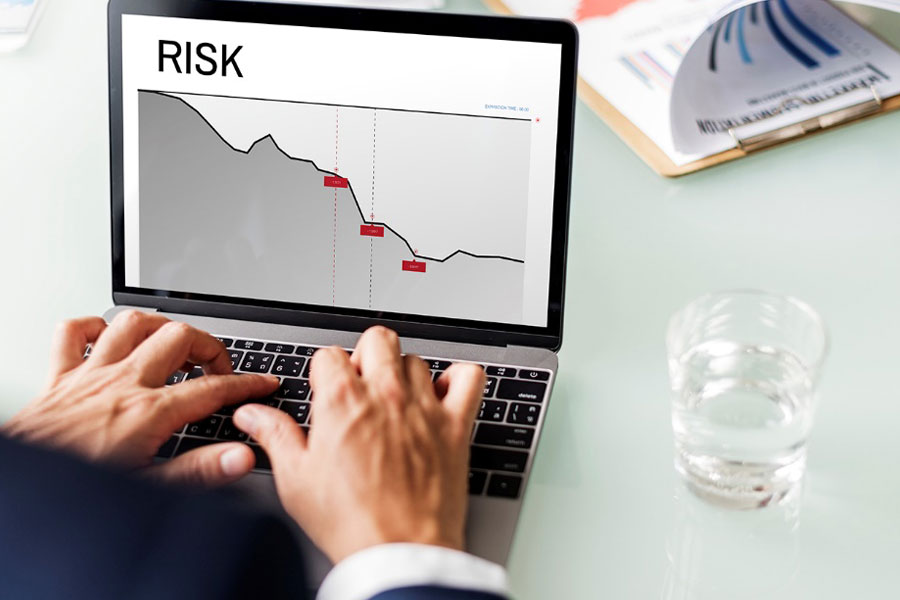Forex trading, the exchange of one currency for another, is one of the largest and most liquid markets in the world. Every day, trillions of dollars change hands in this dynamic and high-stakes arena. For many, the allure of Forex trading lies in the potential for significant financial gains. However, understanding how long it takes to learn Forex is crucial for anyone considering entering the market. Working with a regulated forex broker can provide a secure trading environment, which is vital for success in this field. This comprehensive guide delves into the various aspects of learning Forex trading, offering insights into the learning curve, factors affecting the learning duration, and tips to accelerate the learning process.

Introduction to Forex Trading
Forex, short for foreign exchange, involves trading currency pairs such as the Euro against the US Dollar (EUR/USD). Unlike stock markets, Forex trading operates 24 hours a day, five days a week, due to the global nature of currency exchanges. The market is decentralized, with trading taking place over-the-counter (OTC) via electronic networks among banks, brokers, and individual traders.

Key Concepts in Forex Trading
- Currency Pairs: Forex trades involve two currencies, where one is bought while the other is sold. Major pairs include EUR/USD, GBP/USD, and USD/JPY.
- Example: When trading EUR/USD, you are speculating on the value of the Euro against the US Dollar. If you buy EUR/USD, you are betting that the Euro will increase in value relative to the Dollar.
- Pips: The smallest price move in a currency pair. For most pairs, a pip is 0.0001 of the quoted price.
- Example: If the EUR/USD moves from 1.1000 to 1.1001, it has moved one pip.
- Leverage: This allows traders to control larger positions with a small amount of capital. While leverage can amplify gains, it also increases the risk of significant losses.
- Example: Using 100:1 leverage, a $1,000 deposit can control a $100,000 position.
- Market Analysis: This includes technical analysis (studying price charts and indicators) and fundamental analysis (examining economic indicators and news events).
- Example: Technical traders might use moving averages and support/resistance levels to make trading decisions, while fundamental traders might look at interest rate changes or economic reports.
Understanding the Learning Curve in Forex
Learning Forex trading is a process that varies widely among individuals. The learning curve represents the time and effort required to become proficient in trading. For some, this might be a few months, while for others, it can take several years. The learning curve is influenced by various factors, including prior knowledge, available resources, and personal dedication.
Read more: Forex Trading
Stages of Learning Forex Trading
- Initial Learning Phase: Understanding basic concepts and terminology.
- Activities: Reading introductory books, watching online tutorials, and familiarizing oneself with trading platforms.
- Time Frame: 1-3 months
- Intermediate Phase: Developing and testing trading strategies, learning risk management.
- Activities: Practicing with demo accounts, attending webinars, and joining trading communities.
- Time Frame: 3-6 months
- Advanced Phase: Refining strategies, mastering psychology, and gaining consistent profitability.
- Activities: Live trading with small accounts, detailed performance analysis, and continuous learning.
- Time Frame: 6 months – 2 years
Effective Factors in the Duration of Forex Learning

Several factors influence how long it takes to learn Forex trading:
1. Educational Resources
Access to high-quality educational resources such as online courses, webinars, books, and mentorship can significantly shorten the learning time. Comprehensive education covers both the theoretical and practical aspects of trading.
Recommended Resources:
- Books: “Trading for a Living” by Dr. Alexander Elder, “Currency Trading for Dummies” by Kathleen Brooks and Brian Dolan.
- Online Courses: Courses offered by platforms like Coursera, Udemy, and Babypips.
- Webinars: Many brokers offer free webinars with insights from experienced traders.
2. Practice and Experience
Practical experience, through demo accounts or small live trades, is crucial. The more one practices, the quicker they learn. Practice helps traders understand market behavior and develop their strategies.
Practical Tips:
- Demo Accounts: Use a demo account for at least 3-6 months before risking real money.
- Simulated Trading: Platforms like TradingView offer simulated trading environments to test strategies.
Read more: How Much Can a Beginner Forex Trader Make?
3. Mentorship and Community
Learning from experienced traders and being part of a trading community can provide valuable insights and support. Mentors can offer personalized guidance and feedback, accelerating the learning process.
Finding a Mentor:
- Trading Forums: Engage in forums like Forex Factory or Reddit’s r/Forex.
- Professional Networks: LinkedIn can be a great place to find and connect with experienced traders.
- Broker Services: Some brokers offer mentorship programs for their clients.
4. Psychological Factors
Trading psychology plays a crucial role in Forex trading. Traits such as discipline, patience, and emotional control can impact the speed of learning and the overall success of a trader.
Psychological Training:
- Mindfulness and Stress Management: Techniques such as meditation can help manage stress.
- Trading Journals: Keeping a journal to document trades and emotional responses can help identify patterns and improve decision-making.
5. Time Investment
The amount of time dedicated to learning and practicing Forex trading directly correlates with the speed of mastery. Those who can commit more hours daily will likely learn faster.
Time Management Tips:
- Structured Schedule: Set aside specific hours each day for studying and trading.
- Balanced Approach: Ensure a balance between study, practice, and personal time to avoid burnout.
Read more: Is forex trading hard
Realistic Expectations of Learning Forex Time
Setting realistic expectations is vital to avoid frustration and burnout. Here’s a general timeline based on different commitment levels:
1. Part-Time Learners
- Time Commitment: 1-2 hours per day
- Expected Duration: 1-2 years to achieve consistent profitability
Example:
- Weekdays: Spend 1 hour reading educational material and 1 hour practicing on a demo account.
- Weekends: Review the week’s trades and plan for the upcoming week.
2. Full-Time Learners
- Time Commitment: 4-8 hours per day
- Expected Duration: 6 months to 1 year to achieve consistent profitability
Example:
- Daily Routine: Split the day into segments: market analysis, strategy development, practice trading, and reviewing trades.
- Community Engagement: Participate in online forums and attend live webinars regularly.
3. Intensive Learners
- Time Commitment: 8+ hours per day, with immersion in the market
- Expected Duration: 3-6 months to achieve consistent profitability
Example:
- Immersion Strategy: Live and breathe Forex trading by consuming all forms of related content, engaging with mentors, and practicing rigorously.
It’s important to note that these timelines are estimates and can vary based on individual circumstances.
Tips for Increasing the Speed of Learning and Developing Forex Skills
1. Structured Learning Plan
Create a detailed learning plan with clear milestones. Focus on one aspect of trading at a time, such as technical analysis or risk management.
Example Learning Plan:
- Month 1-2: Focus on learning the basics of Forex trading and market terminology.
- Month 3-4: Develop and test simple trading strategies using a demo account.
- Month 5-6: Learn about risk management and start live trading with small amounts.
2. Use of Demo Accounts
Start with a demo account to practice without the risk of losing real money. This helps in gaining practical experience and testing strategies.
Benefits:
- Risk-Free Environment: Practice without financial risk.
- Strategy Testing: Test and refine strategies in real market conditions.
3. Join Forex Communities
Engage with Forex communities and forums to learn from other traders’ experiences. Participating in discussions and following expert traders can provide valuable insights.
Popular Communities:
- Forex Factory: A popular forum with discussions on various trading topics.
- Reddit r/Forex: A community of traders sharing experiences and advice.
4. Regular Review and Reflection
Regularly review your trades to understand what worked and what didn’t. Keeping a trading journal can help track progress and identify areas for improvement.
Journal Components:
- Trade Details: Entry and exit points, position size, and trade rationale.
- Outcome Analysis: Profit or loss, lessons learned, and emotional response.
5. Stay Updated with Market News
Keep abreast of global economic news and events that impact currency markets. This knowledge helps in making informed trading decisions.
News Sources:
- Economic Calendars: Websites like Investing.com provide economic calendars with important events.
- Financial News: Follow news from Bloomberg, Reuters, and CNBC.
6. Continuous Learning
The Forex market is dynamic, and continuous learning is essential. Stay updated with new strategies, tools, and market trends.
Learning Activities:
- Advanced Courses: Enroll in advanced trading courses and certifications.
- Books and Articles: Read books by renowned traders and research articles on new trading methodologies.
Case Study: From Beginner to Proficient Trader
John’s Journey to Forex Proficiency
Initial Phase: John started his Forex trading journey with zero knowledge about the market. He enrolled in a comprehensive online course that covered the basics of Forex trading, including currency pairs, pips, and leverage. John spent the first three months studying the material and practicing on a demo account.
Intermediate Phase: After gaining a basic understanding, John moved to the intermediate phase. He developed a simple trading strategy and began testing it on a demo account. During this period, John also joined a Forex trading community and found a mentor who provided personalized guidance. This phase lasted for about six months.
Advanced Phase: John transitioned to live trading with a small account. He focused on refining his strategy and improving his psychological resilience. He kept a trading journal, analyzed his trades regularly, and learned from his mistakes. After a year of dedicated practice and learning, John started achieving consistent profitability.
Outcome: It took John approximately 18 months to become a proficient Forex trader. His journey underscores the importance of structured learning, practical experience, and continuous improvement.
Case Study: Sarah’s Path to Forex Mastery
Initial Phase:
Sarah began her Forex journey with a background in finance, which gave her a slight edge. She dedicated the first two months to intensive study, focusing on understanding technical and fundamental analysis. She utilized online courses and read extensively on trading psychology.
Intermediate Phase:
Sarah started practicing with a demo account, experimenting with various trading strategies. She joined an online trading community and participated in weekly webinars. Her mentor, an experienced trader, provided valuable insights and feedback on her trades. This phase lasted for six months.
Advanced Phase:
Transitioning to live trading, Sarah faced the challenges of emotional trading and risk management. She meticulously recorded each trade, analyzing her performance and psychological responses. Over the next year, she honed her strategy, focusing on high-probability setups and strict risk management.
Outcome:
After 14 months, Sarah achieved consistent profitability. Her success was attributed to her disciplined approach, continuous learning, and the support of her trading community.
Detailed Strategy Breakdown: Risk Management
Understanding Risk Management
Risk management is a crucial aspect of Forex trading that can significantly impact the success and longevity of a trader. It involves identifying, analyzing, and mitigating the risks associated with trading activities. Effective risk management strategies can help protect trading capital and maximize profits.

Key Components of Risk Management:
- Position Sizing: Determining the size of each trade relative to the account balance to ensure that a single loss does not significantly impact the trading account.
- Example: A common rule is to risk no more than 1-2% of the trading capital on a single trade.
- Stop-Loss Orders: Predefined price levels at which a trade will be automatically closed to prevent further losses.
- Example: Setting a stop-loss 50 pips away from the entry point.
- Risk-Reward Ratio: The ratio of potential profit to potential loss in a trade. A favorable risk-reward ratio ensures that the potential profit outweighs the potential loss.
- Example: A 2:1 risk-reward ratio means risking $100 to make $200.
- Diversification: Spreading investments across different currency pairs to reduce exposure to any single market movement.
- Example: Trading multiple currency pairs like EUR/USD, GBP/USD, and USD/JPY rather than focusing on one pair.
Read More: Forex Trading Books for Beginners
Implementing Risk Management
To implement effective risk management, traders should develop a comprehensive trading plan that includes risk management rules and adhere to them consistently.
Example Trading Plan:
- Set Risk Parameters:
- Risk no more than 1% of the account balance per trade.
- Use a minimum risk-reward ratio of 2:1.
- Define Entry and Exit Points:
- Use technical analysis to determine optimal entry and exit points.
- Place stop-loss and take-profit orders based on predefined criteria.
- Monitor and Adjust:
- Regularly review trades to ensure adherence to risk management rules.
- Adjust position sizes and stop-loss levels based on market conditions and account balance.
Conclusion:
Learning Forex trading is a journey that requires time, dedication, and continuous improvement. By understanding the learning curve, recognizing the factors that influence learning duration, and applying effective strategies to accelerate the process, aspiring traders can achieve proficiency and success in the Forex market. Setting realistic expectations and maintaining a disciplined approach are key to navigating the dynamic world of Forex trading.
References: +
How can I find a reliable Forex mentor?
Finding a reliable Forex mentor involves researching experienced traders with a proven track record, seeking recommendations from trading communities, and evaluating their teaching style to ensure it matches your learning preferences.
What are the common mistakes to avoid when learning Forex trading?
Common mistakes include over-leveraging, ignoring risk management, emotional trading, and not having a solid trading plan.
Is it necessary to have a financial background to learn Forex trading?
While a financial background can be beneficial, it is not necessary. Many successful Forex traders come from diverse backgrounds and have learned trading through dedicated study and practice.
How do economic events impact Forex trading?
Economic events such as interest rate decisions, employment reports, and geopolitical events can cause significant volatility in currency markets. Understanding these events is crucial for making informed trading decisions.
Can automated trading systems help in learning Forex trading?
Automated trading systems, or trading bots, can assist in learning by executing trades based on predefined criteria. They help traders understand market patterns and test strategies without emotional interference.
What role does risk management play in Forex trading success?
Risk management is vital for long-term success in Forex trading. It involves setting stop-loss orders, diversifying trades, and limiting exposure to prevent significant losses.
How important is backtesting in Forex trading?
Backtesting involves testing a trading strategy on historical data to evaluate its effectiveness. It is crucial for understanding how a strategy would have performed in the past and for making necessary adjustments before applying it to live trading.
What are the advantages of using a trading journal?
A trading journal helps track performance, identify strengths and weaknesses, and develop a disciplined approach. It provides a record of trades, market conditions, and emotional responses, aiding in continuous improvement.
How do leverage and margin work in Forex trading?
Leverage allows traders to control larger positions with a smaller amount of capital, while margin is the collateral required to open a leveraged position. While leverage can amplify profits, it also increases the risk of significant losses.
What are the different types of Forex trading strategies?
Forex trading strategies can be broadly classified into technical strategies (based on chart analysis and indicators) and fundamental strategies (based on economic data and news events). Examples include trend-following, scalping, and carry trade strategies.
How can I manage emotions while trading Forex?
Managing emotions involves developing psychological resilience through techniques like mindfulness, setting realistic goals, maintaining a trading plan, and keeping a trading journal to reflect on emotional responses and improve decision-making.
What is the importance of continuous education in Forex trading?
The Forex market is constantly evolving, and continuous education is essential to stay updated with new strategies, tools, and market conditions. Ongoing learning helps traders adapt to changes and improve their trading performance.







